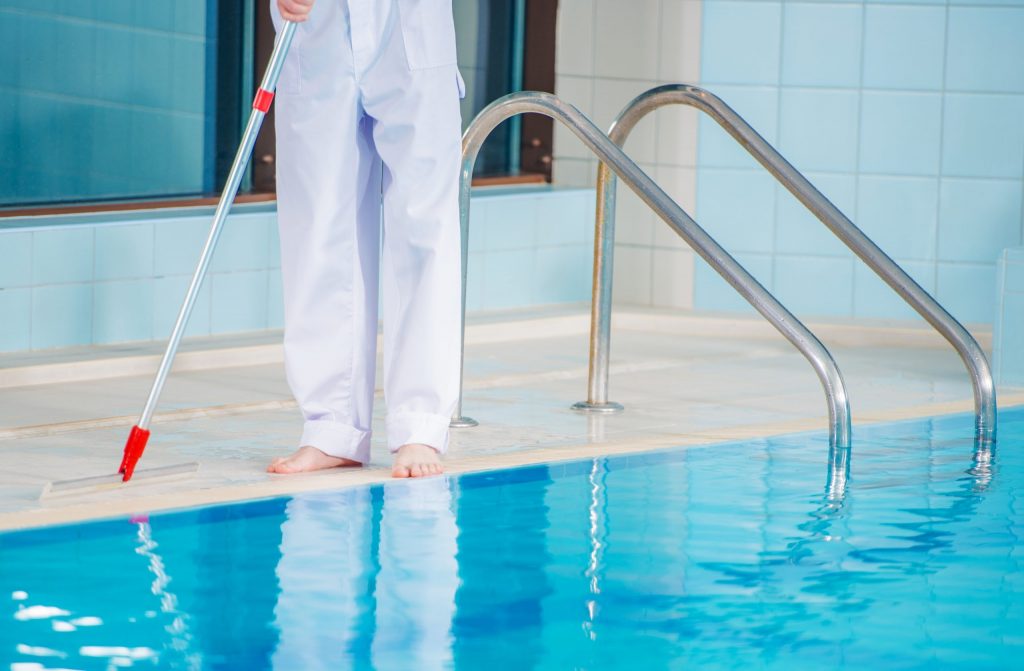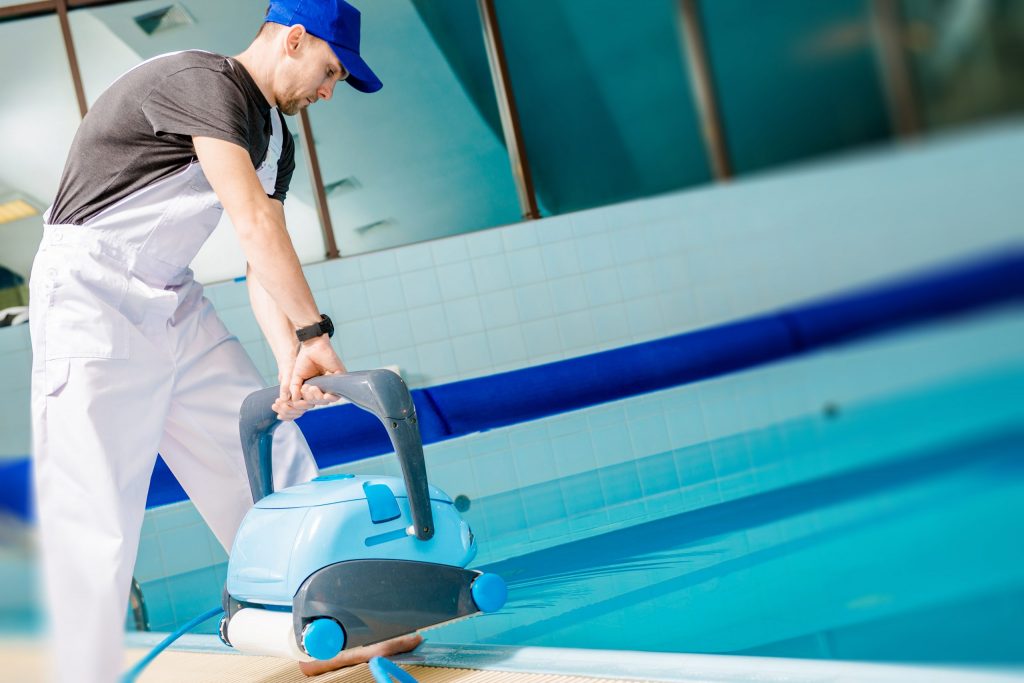Weekly Pool Maintenance – Recurring Responsibilities To Stay On Top Of
Weekly pool maintenance is an ongoing responsibility to maintain a safe and sanitary swimming pool. For every pool and swimming facility, it’s important to have a comprehensive checklist that covers these responsibilities. Everything from inspection to locking up for the night plays an important role in keeping things afloat. These things are what a Certified Pool Operator (CPO®) will learn about at class.
Inspection
The first step in weekly pool maintenance is a thorough inspection of the area surrounding the pool. The pool deck, pump and filter area, bathhouse and restrooms, fencing and the general grounds areas of the property should be inspected for damage, theft, and malfunctioning equipment. This step should be carried out before any swimmers are allowed onto the premises. You should also be performing mini daily inspections for proper operation and safety.
Test the water quality and clarity and make any necessary adjustments prior to swimming. Correct the pH and disinfectant levels to ensure the pool or spa is safe for swimming. Check that the main drain cover is firmly attached and intact. Next, make sure all suction openings in gutters and skimmers are free of debris. Test to see that all inlet fittings and vacuum line covers are in place. Check handrails, ladders, slides and diving boards for damage and that they are firmly attached. Slides should have special consideration and should be checked for worn spots.
Make sure the deck area around the pool is clear of any items. Move the furniture away from the pool to a distance that is in accordance with state and local regulations. All signs, warnings and safety equipment must be in place. Empty all waste bins and position them in an easily accessible and visible area. Check the flow meter in the pump room and backwash the filters if needed. Fill the chemical reservoirs and inspect the controller set-points, vacuum and pressure gauges. Finally, clear the hair and lint strainer after you turn off the pump.
Brushing
Pools should be brushed during weekly pool maintenance. Brushing removes the debris from pool and spa walls. Use debris brushes to dislodge any algae that has accumulated. The brush used depends on the material of the pool walls. Plaster walls can be brushed with stainless steel bristles and vinyl surfaces can be brushed with plastic bristles. Using a steel brush on vinyl surfaces could damage them.
Vacuuming
Vacuuming is another essential task during weekly pool maintenance. Debris on the bottom of a pool stimulates algae growth and makes the pool appear dirty. Swimmers will churn up debris in the water so it is important to wait until everything has settled after the pool is closed. Wait at least two hours after the last swimmer has left the pool before vacuuming. If you brush the pool walls, you should also give time for the debris to settle. Automated vacuum systems are especially helpful – they can clean large pools in a matter of hours and can turn on and off on a timer.
Tile Cleaning
For a sanitary pool, cleaning the water-line and gutter tile are recommended during weekly pool maintenance. The scumline of a pool collects oils and dirt, becoming a breeding ground for bacteria and algae. Tiles should be cleaned with non-abrasive cleaners to avoid scratching the finish. Make sure the cleaner used is compatible with your pool’s water chemistry. It should not cause foaming or contain any phosphates.
Weekly Pool Maintenance and Education
These are only the basics of weekly pool maintenance. You can learn more about this topic and much more by becoming a Certified Pool Operator (CPO®). The CPO® certification class is a great start to becoming a pool expert. Pool Operation Management’s award-winning CPO certification courses train you how to properly operate a swimming pool. Our two-day courses offer a wealth of information and training in everything from pool chemicals, to energy conservation to surface water removal. If you have no interest in learning, we can take care of the maintenance! For the very best in everything related to pools, contact us today.








